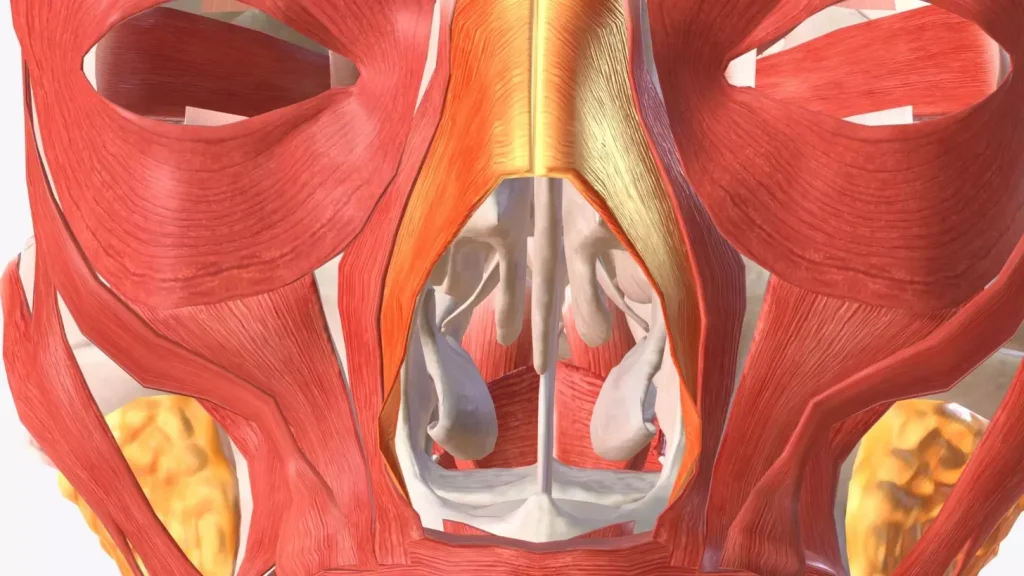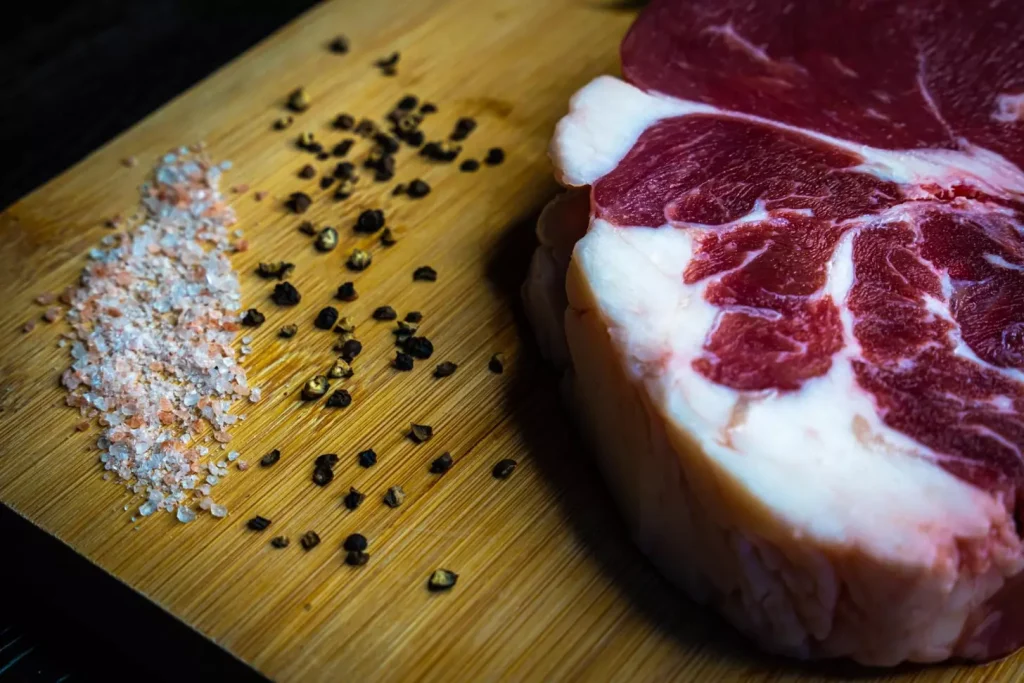Last Updated on December 9, 2025 by mcelik

At Liv Hospital, we’re diving into the world of bone marrow. It’s a key part of traditional diets and is now getting attention for its special nutrients.
Bone marrow is packed with collagen, B vitamins, and important minerals. It’s a great addition to a healthy diet. We’ll look into the science behind bone marrow’s nutrients. We’ll talk about its benefits and risks, giving you a full picture of its health effects.
Key Takeaways
- Rich in collagen, B vitamins, and essential minerals
- Potential benefits include improved joint health and digestion
- High fat content may be a concern for some individuals
- Nutritional value can vary based on the source animal
- Traditional diets have long utilized bone marrow for its nutritional benefits
What Is Bone Marrow? Understanding This Nutrient-Rich Food

Bone marrow is a key source of nutrients and has a long history in human diets. It’s the spongy tissue inside bones like hips and thighbones. It makes blood cells, which are vital for our bodies.
Types of Bone Marrow: Yellow vs. Red
Bone marrow comes in two types: yellow and red. Yellow marrow is mostly fat, storing energy. On the other hand, red marrow makes blood cells like red and white blood cells and platelets. Babies have more red marrow, which turns to yellow as they grow.
Knowing the difference between yellow and red marrow helps us understand bone marrow’s nutritional value. Yellow marrow is full of fat, while red marrow is packed with blood cells and nutrients.
Cultural and Historical Significance of Bone Marrow Consumption
For centuries, people have eaten bone marrow for its health benefits. In many cultures, it’s seen as a special treat, often served at big events. Its rich nutrients and healing properties are why it’s valued so much.
“The use of bone marrow in traditional medicine is well-documented across various cultures, highlighting its importance not just as a food source but as a therapeutic agent.”
How bone marrow is prepared varies greatly between cultures. It’s roasted, used in soups, and more. Its versatility shows its value beyond just being a food.
The Nutritional Profile of Bone Marrow

Bone marrow is a mix of fats, proteins, and micronutrients. It has a lot of calories, mainly from fat. This includes both saturated and unsaturated fats.
Calories and Macronutrients in Bone Marrow
One tablespoon of caribou bone marrow has about 110 calories. It has 12 grams of fat, mostly oleic acid. It also has some protein and other nutrients.
The number of calories can change based on the animal and the bone marrow cut. For example, beef bone marrow might have a different mix of nutrients than caribou.
Vitamins and Minerals Found in Bone Marrow
Bone marrow is packed with vitamins and minerals. It has vitamin B12, riboflavin, thiamine, and vitamin E. A big piece of bone marrow can give you a lot of these nutrients.
Key vitamins and minerals in bone marrow include:
- Vitamin B12: Essential for energy production and nerve function.
- Riboflavin (B2): Important for energy production and can help reduce the risk of migraine and cataract formation.
- Thiamine (B1): Crucial for energy metabolism and the functioning of the nervous system.
- Vitamin E: Acts as an antioxidant, protecting cells from damage.
Nutritional Differences Between Animal Sources
The nutritional value of bone marrow varies by animal. Caribou bone marrow is rich in certain nutrients. Beef bone marrow has a different fatty acid mix.
These differences depend on the animal’s diet, age, and how the bone marrow is prepared. Knowing these differences helps those with specific dietary needs.
Is Bone Marrow Healthy? Examining the Evidence
Bone marrow has a long history in traditional medicine. Now, modern science is looking into it. We’ll see what science and traditional medicine say about its health benefits.
Scientific Research on Bone Marrow Consumption
Studies are uncovering the good stuff in bone marrow. It’s packed with nutrients like collagen, vitamins, and minerals. These might help with joint and skin health and even fight inflammation.
Nutritional Components and Their Effects:
- Collagen: May improve skin elasticity and joint health.
- Vitamin B12: Essential for energy production and neurological function.
- Conjugated Linoleic Acid (CLA): May have anti-inflammatory properties.
Here are some key findings in a table:
| Nutrient | Benefit | Source |
|---|---|---|
| Collagen | Improves skin and joint health | Bone Marrow |
| Vitamin B12 | Essential for energy and neurological function | Bone Marrow, Meat |
| CLA | May reduce inflammation | Bone Marrow, Dairy |
Traditional Medicine Perspectives on Bone Marrow
Traditional medicine has always seen bone marrow as healing. In many cultures, it’s a prized food. It’s used in medicines to boost vitality and strength.
Historical Uses of Bone Marrow:
- Used in traditional Chinese medicine to tonify the kidneys and strengthen bones.
- Employed in some African cultures to enhance vitality and treat various ailments.
- Valued in European folk medicine for its supposed benefits to the blood and overall health.
While traditional practices offer insights, we need scientific proof. This will help us understand bone marrow’s health effects fully.
Benefit #1: Rich Source of Collagen for Joint and Skin Health
Bone marrow is packed with collagen, a protein vital for healthy joints and skin. Collagen is key in connective tissue, giving our bodies structure and flexibility. This makes bone marrow a great source for joint and skin health.
How Collagen in Bone Marrow Supports Connective Tissues
Collagen in bone marrow is vital for our connective tissues. Connective tissue is everywhere in our bodies, giving support and structure. Collagen keeps connective tissue strong, helping our joints and skin stay healthy.
The collagen in bone marrow is full of amino acids like glycine, proline, and hydroxyproline. These amino acids are key for making collagen in our bodies. They help repair and keep connective tissues healthy. Eating bone marrow gives our bodies the right building blocks for strong connective tissues.
Potential Anti-Aging and Skin Elasticity Effects
The collagen in bone marrow could also fight aging, mainly for our skin. As we get older, we make less collagen, causing wrinkles and less elastic skin. Eating collagen-rich foods like bone marrow might help keep our skin looking young and healthy.
| Benefit | Description |
|---|---|
| Joint Health | Collagen in bone marrow supports the health and integrity of joints. |
| Skin Elasticity | The amino acids in collagen help improve skin elasticity and reduce signs of aging. |
| Connective Tissue Support | Collagen provides essential support to connective tissues throughout the body. |
Eating bone marrow can bring many health benefits, thanks to its collagen. It supports overall health and well-being.
Benefit #2: Provides Essential Vitamin B12 for B12 for Energy and Brain Function
Vitamin B12 is key for energy and brain health. Bone marrow is a great source of this vitamin. We’ll see how it boosts our health and why bone marrow is good for us.
The Role of B12 in the Body
Vitamin B12 helps make red blood cells, supports nerves, and aids in DNA creation. It’s vital for breaking down fats and proteins, which gives us energy. It also keeps our nervous system healthy, affecting mood and brain function.
Lacking vitamin B12 can cause tiredness, weakness, and nerve issues. It’s important to get enough, mainly for those who don’t eat meat or animal products.
How Bone Marrow Can Help Prevent B12 Deficiency
Bone marrow is packed with vitamin B12. Eating it helps meet our daily B12 needs, boosting energy and brain health. The B12 in bone marrow is easily absorbed by our bodies.
Adding bone marrow to our diet is great for those at risk of B12 deficiency. This includes older adults, pregnant women, and people with some gut problems. Bone marrow ensures they get enough B12 for good health.
In summary, vitamin B12 is essential and found in plenty in bone marrow. Knowing its importance for energy and brain health shows why we should eat bone marrow. It helps prevent deficiency and supports our overall health.
Benefit #3: Contains Conjugated Linoleic Acid (CLA) with Anti-inflammatory Properties
Conjugated linoleic acid (CLA) is found in bone marrow and has anti-inflammatory properties. It is a type of linoleic acid isomer with health benefits. We will look into how CLA affects the body and the latest research on its benefits.
Understanding CLA and Its Effects on the Body
CLA is mainly in the meat and dairy of grass-fed animals. When we eat it, CLA goes into our blood. Studies suggest it can help control the immune system and lower inflammation, improving our health.
CLA works in many ways to affect the body. It can change how our body makes pro-inflammatory cytokines. These molecules cause inflammation. By reducing these cytokines, CLA may lessen chronic inflammation.
Current Research on CLA and Chronic Inflammation
Many studies have looked into CLA’s anti-inflammatory effects. A meta-analysis of clinical trials showed CLA lowered inflammatory markers. Another study found CLA reduced pro-inflammatory cytokines in human immune cells.
Even with promising results, more research is needed. We need to know the best CLA dosage, how long to take it, and how people react differently to it.
Benefit #4: Supports Iron Levels and Blood Health
Bone marrow is key to keeping iron levels up and preventing anemia. Iron is vital for making hemoglobin, which carries oxygen in red blood cells. Without enough iron, the body can’t get enough oxygen, causing fatigue and weakness.
Iron Content in Different Types of Bone Marrow
Bone marrow is packed with iron, mostly heme iron, which the body absorbs better than non-heme iron from plants. The amount of iron varies by type of bone marrow. For example:
- Beef bone marrow is very high in iron, making it great for boosting iron levels.
- Caribou bone marrow also has a lot of iron, but the amount can change based on the animal’s diet and living conditions.
Choosing different animal sources for bone marrow lets people find the right iron content for their diet.
How Bone Marrow Can Help Combat Iron-Deficiency Anemia
Iron-deficiency anemia happens when there’s not enough iron for red blood cells. Eating bone marrow can help because it’s a natural source of iron that’s easy for the body to absorb. The heme iron in bone marrow is better absorbed than iron from many plants.
Eating bone marrow can help keep iron levels healthy and prevent anemia. It’s good for people at risk, like pregnant women, vegetarians, and those with certain stomach problems.
Benefit #5: Provides Essential Amino Acids Like Glycine
Bone marrow is packed with essential amino acids, like glycine. Glycine is key for many body functions. Amino acids are the foundation of proteins and are essential for our health.
Glycine is getting attention for its health perks. It’s important for detox and sleep.
The Importance of Glycine for Detoxification and Sleep
Glycine helps make glutathione, a strong antioxidant. Glutathione fights off free radicals and helps remove toxins. This is vital for our body’s health.
Glycine also helps with sleep quality. Studies show it can make us feel more relaxed and lower our body temperature. This helps us fall asleep better.
Other Beneficial Amino Acids in Bone Marrow
Besides glycine, bone marrow has other amino acids that are good for us. These include:
- Proline: It’s important for making collagen and keeping skin, hair, and nails healthy.
- Hydroxyproline: It helps collagen stay stable and is key for connective tissue health.
- Arginine: It’s involved in many metabolic processes, including making nitric oxide. This is good for heart health.
These amino acids work together to offer many health benefits. They help with joint health and overall well-being.
Benefit #6: Rich in Phosphorus for Bone and Cellular Health
Bone marrow is packed with phosphorus, a key mineral for bones and cells. Phosphorus is the second most common mineral in our bodies. It’s found in bone marrow, making it a great food for our diet.
Phosphorus is vital for strong bones and teeth. It also helps with many body functions. So, bone marrow is a great addition to a healthy diet.
The Role of Phosphorus in Bone Formation and Metabolism
Phosphorus is key in making bones strong by combining with calcium. It’s also important for energy and storing it.
The phosphorus in bone marrow helps bones in several ways:
- Promoting bone mineralization
- Supporting bone density
- Aiding in the repair of bone tissue
How Bone Marrow Contributes to Optimal Phosphorus Intake
Eating bone marrow is a good way to get more phosphorus. It’s easy for our bodies to use the phosphorus in bone marrow. This makes it a great food choice.
| Food Source | Phosphorus Content (mg per 100g) |
|---|---|
| Bone Marrow (Beef) | 220-280 |
| Chicken Bone Marrow | 200-250 |
| Salmon | 180-220 |
The table shows bone marrow is a big phosphorus source, like other foods rich in it. Adding bone marrow to your meals can boost bone health and cell function.
We suggest eating bone marrow to get its phosphorus benefits. It’s a good way to support your health and well-being.
Benefit #7: Supports Immune Function and Gut Health
Bone marrow is great for boosting your immune system and improving gut health. We’ll see how its components help with these benefits.
Bone Marrow Components That Enhance Immunity
Bone marrow is packed with nutrients that boost your immune system. It has conjugated linoleic acid (CLA), vitamins, and minerals. Studies show these can help your body fight off infections.
For example, a study on PMC talks about how certain nutrients support immune function.
Potential Benefits for Digestive Health and Gut Barrier Function
Bone marrow is also good for your digestive system and gut health. The collagen and proteins in it can strengthen your gut lining. A strong gut lining keeps harmful pathogens out of your bloodstream.
By supporting your gut, bone marrow can improve your overall health. A healthy gut microbiome is key for a strong immune system. The nutrients in bone marrow help keep your gut balanced.
How to Prepare and Eat Bone Marrow
To get the most from bone marrow, learning how to prepare it is key. It can be used in many dishes, from soups to roasted meals.
Selecting Quality Bone Marrow
When picking bone marrow, choose high-quality sources. Opt for bones from grass-fed, pasture-raised animals. They have better fats and more nutrients. The bones should be fresh and cut easily for cooking.
Popular Cooking Methods and Recipes
There are several ways to cook bone marrow, each highlighting its unique taste and texture. Roasting is a favorite, where bones are roasted until the marrow is soft. Making bone broth or soups is another way, simmering bones to get the marrow’s nutrients.
For a basic roasted bone marrow recipe, heat your oven to 425 °F (220 °C). Place the bones on a baking sheet and roast for 15-20 minutes. Then, serve with salt and lemon juice.
Recommended Serving Sizes for Optimal Benefits
The right serving size for bone marrow varies. A good amount is 1-2 tablespoons (15-30 grams) per meal. This size offers a good mix of nutrients without too many calories.
Remember to balance bone marrow with veggies and whole grains. This makes your meal more nutritious and satisfying.
Potential Drawbacks and Considerations Before Eating Bone Marrow
Adding bone marrow to your diet comes with some downsides. It’s packed with health benefits, but there are things to think about before making it a staple.
High Calorie and Saturated Fat Content
Bone marrow is very rich in calories and saturated fats. A single serving can have a lot of calories, which might be a problem for those watching their weight. The saturated fats could also be a concern for heart health.
Let’s look at the nutritional values of bone marrow from different sources:
| Source | Calories per Serving | Saturated Fat per Serving |
|---|---|---|
| Beef Bone Marrow | 250-300 | 15-20g |
| Caribou Bone Marrow | 200-250 | 10-15g |
| Marrow from Grass-Fed Animals | 220-280 | 12-18g |
Quality and Sourcing Concerns
The quality and where you get your bone marrow from are key. Marrow from grass-fed, pasture-raised animals is better because of its fatty acids and lower risk of contaminants. Getting it from trusted suppliers or local farms can help avoid some risks.
Who Should Limit or Avoid Bone Marrow Consumption
While bone marrow is nutritious, some people should be careful or avoid it. These include:
- Those with high cholesterol or heart disease should be cautious because of its saturated fats.
- People with obesity or weight issues might need to limit it because of its calories.
- Those with digestive problems might find its richness makes their symptoms worse.
It’s wise to talk to a healthcare professional or registered dietitian before big diet changes, if you have health issues.
Conclusion: Is Bone Marrow Worth Adding to Your Diet?
We’ve looked into the good and bad of eating bone marrow. It’s packed with collagen, vitamin B12, and CLA. These help with joint health, energy, and may lower inflammation. But, it’s high in calories and fat, so eat it in small amounts.
Deciding if bone marrow is good for you depends on its benefits and drawbacks. It’s great for those wanting more nutrients. It boosts the immune system, gut health, and gives important amino acids and phosphorus.
To enjoy bone marrow healthily, choose high-quality, grass-fed sources and eat it sparingly. This way, you get its good stuff without the bad. Knowing how it fits into your diet helps you make smart choices for your health.
Is bone marrow bad for you?
Bone marrow is high in calories and saturated fat. But it also has important nutrients like collagen, vitamin B12, and iron. Eating it in moderation can help you enjoy its benefits while avoiding its downsides.
Is bone marrow fatty?
Yes, bone marrow has a lot of fat, mostly saturated. But it also has healthy fats that are good for your body.
What are the benefits of eating cow bone marrow?
Cow bone marrow is full of collagen, vitamin B12, and other nutrients. These support your joints, energy, and brain. It may also lower inflammation and boost your immune system.
Is it healthy to eat bone marrow?
Eating bone marrow can be healthy if done in moderation. It gives you important nutrients. But, you need to balance it with other foods because of its high calories and fat.
Can you eat bone marrow?
Yes, you can eat bone marrow. It’s been eaten in many cultures for its nutritional value. You can roast, sauté, or add it to soups and stews.
Does bone marrow have iron?
Yes, bone marrow has iron. The amount depends on the animal it comes from. It helps keep your iron levels up and fight iron-deficiency anemia.
Is beef bone marrow good for you?
Beef bone marrow is packed with nutrients like collagen, vitamin B12, and iron. It supports your joints, energy, and immune system. Adding it to your diet can be a nutritious choice.
What is bone marrow good for?
Bone marrow is great for your joints, energy, brain, and immune system. It’s also full of collagen, which can make your skin more elastic and youthful.
Is bone marrow fat healthy?
Bone marrow has a mix of fats, including saturated and unsaturated. Some fats, like conjugated linoleic acid (CLA), might be good for you. They could help reduce inflammation.
What are the benefits of bone marrow supplements?
Bone marrow supplements offer a lot of collagen, vitamin B12, and other nutrients. They might help with joint health, energy, and immune function. But, more research is needed to confirm their benefits.
Is bone marrow bad for you?
Bone marrow is high in calories and saturated fat. But it also has important nutrients like collagen, vitamin B12, and iron. Eating it in moderation can help you enjoy its benefits while avoiding its downsides.
Is bone marrow fatty?
Yes, bone marrow has a lot of fat, mostly saturated. But it also has healthy fats that are good for your body.
What are the benefits of eating cow bone marrow?
Cow bone marrow is full of collagen, vitamin B12, and other nutrients. These support your joints, energy, and brain. It may also lower inflammation and boost your immune system.
Is it healthy to eat bone marrow?
Eating bone marrow can be healthy if done in moderation. It gives you important nutrients. But, you need to balance it with other foods because of its high calories and fat.
Can you eat bone marrow?
Yes, you can eat bone marrow. It’s been eaten in many cultures for its nutritional value. You can roast, sauté, or add it to soups and stews.
Does bone marrow have iron?
Yes, bone marrow has iron. The amount depends on the animal it comes from. It helps keep your iron levels up and fight iron-deficiency anemia.
Is beef bone marrow good for you?
Beef bone marrow is packed with nutrients like collagen, vitamin B12, and iron. It supports your joints, energy, and immune system. Adding it to your diet can be a nutritious choice.
What is bone marrow good for?
Bone marrow is great for your joints, energy, brain, and immune system. It’s also full of collagen, which can make your skin more elastic and youthful.
Is bone marrow fat healthy?
Bone marrow has a mix of fats, including saturated and unsaturated. Some fats, like conjugated linoleic acid (CLA), might be good for you. They could help reduce inflammation.
What are the benefits of bone marrow supplements?
Bone marrow supplements offer a lot of collagen, vitamin B12, and other nutrients. They might help with joint health, energy, and immune function. But, more research is needed to confirm their benefits.
References
Healthline. Bone Marrow (Nutrition). https://www.healthline.com/nutrition/bone-marrow
WebMD. Health Benefits of Bone Marrow. https://www.webmd.com/diet/health-benefits-bone-marrow
Bare Bones Broth. Bone Marrow Benefits Wellness Guide. https://www.barebonesbroth.com/blogs/blog/bone-marrow-benefits-wellness-guide





